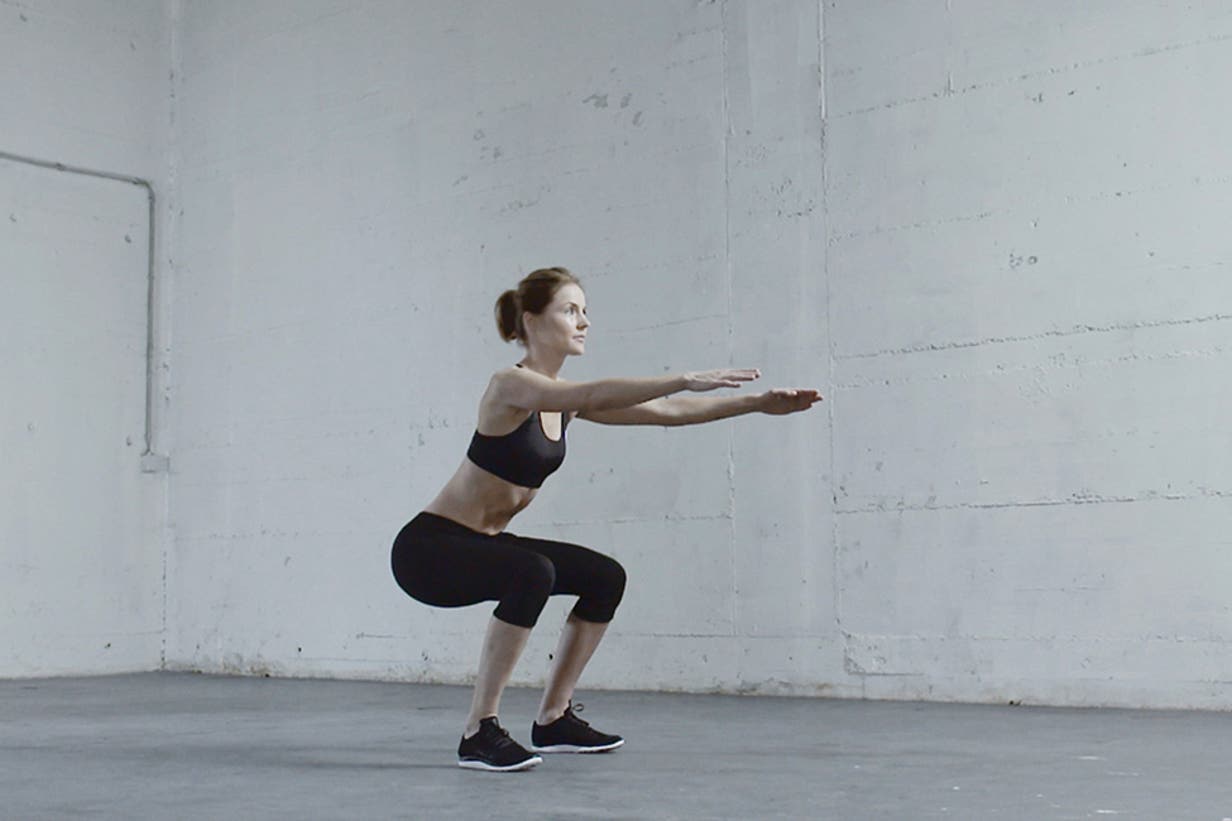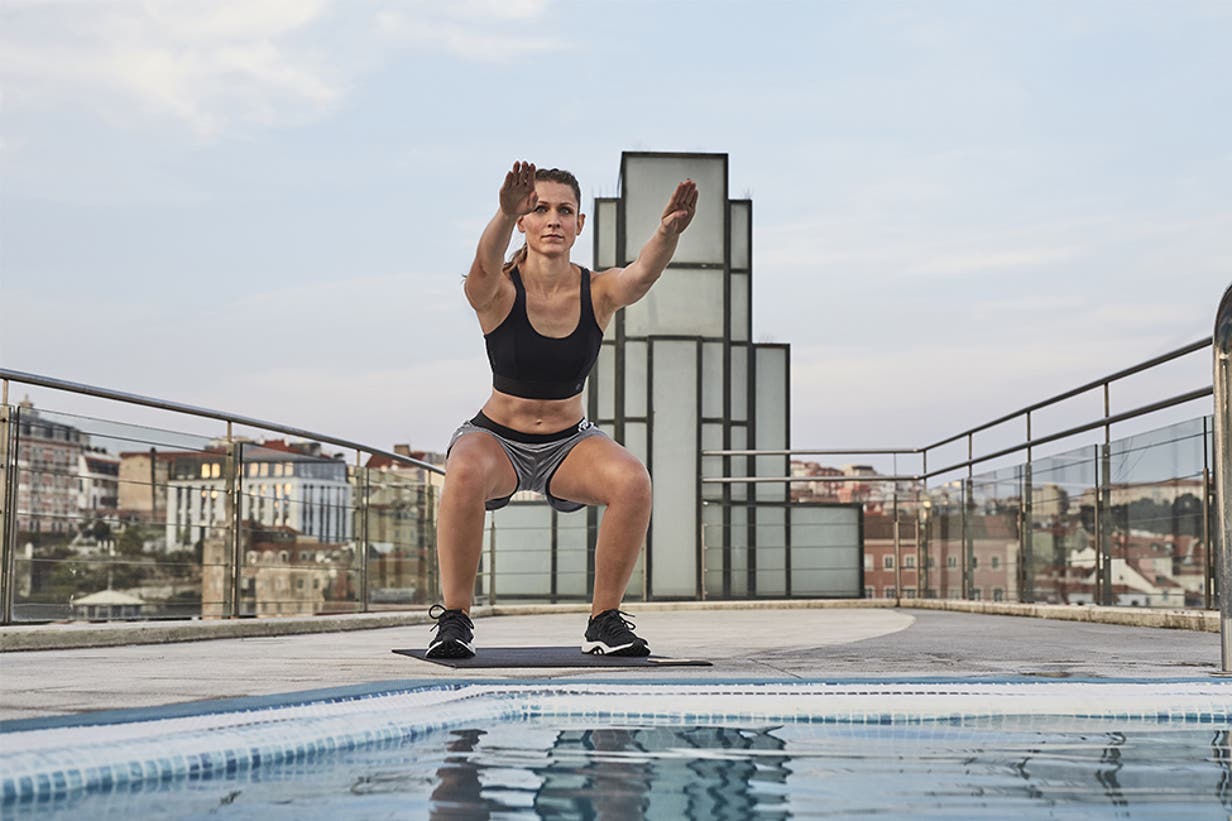Squats are one of the basic bodyweight exercises, included in many Freeletics workouts. Although you may be more advanced and already squatting with weights, it’s worth checking your basic squat technique, since it’s the exercise people most often get wrong. Before cranking out another rep, here’s what to look out for next time you drop it to the ground.

Not dropping low enough
The biggest mistake people make with squats is not going down low enough. This reduces the effectiveness of the movement because it limits the range of motion. For the ideal squat, your hips should be lower than your knees – there’s a reason they call it “ass to the grass”.
For the correct movement and to avoid injury, ensure your feet are shoulder-width apart to allow your body to remain steady as you lower to the floor, and ensure your hips are below your knees before coming back up to standing position.
Knees turned in
This mistake could cost you some serious results, and may cause long-term pain in your joints. If your knees cave in performing squats, it makes it impossible to fully activate your glutes. This affects your strength and force is unintentionally transferred to your knee joints and ligaments – setting you up for big knee problems.
Our tip: Always focus on having your knees facing outwards, and ensure they are aligned with your ankles during the entire exercise.

Leaning too far forwards
Leaning forwards is highly inefficient when doing squats. If you really want your squats to count, your back and upper body need to be as straight and upright as possible. If you have difficulties keeping your balance, ensure you are placing most of your weight on your heels when lowering. This helps you to avoid leaning forwards and also means you’re working your glutes more.
Lifting your heels
If your heels come off the floor when you go into a squat, your movement will become unstable and this will stress your knees by shifting the weight forward. Focus on putting your weight into your heels so that ideally, you‘re able to lift your toes off the ground whilst squatting.
Hunched back
Another important point to remember is to keep your back straight and flat. If your back is rounded during a squat, this puts your spine in a seriously unstable position and places stress on the intervertebral discs, which are highly sensitive to injury. Make sure to hold your spine in a neutral position with a slight arch in your lower back when performing the move.
Focus first on your technique, make your bodyweight squats perfect and earn your star – the rest will come. Be it repetitions, weights, variations or speed. Happy squatting!